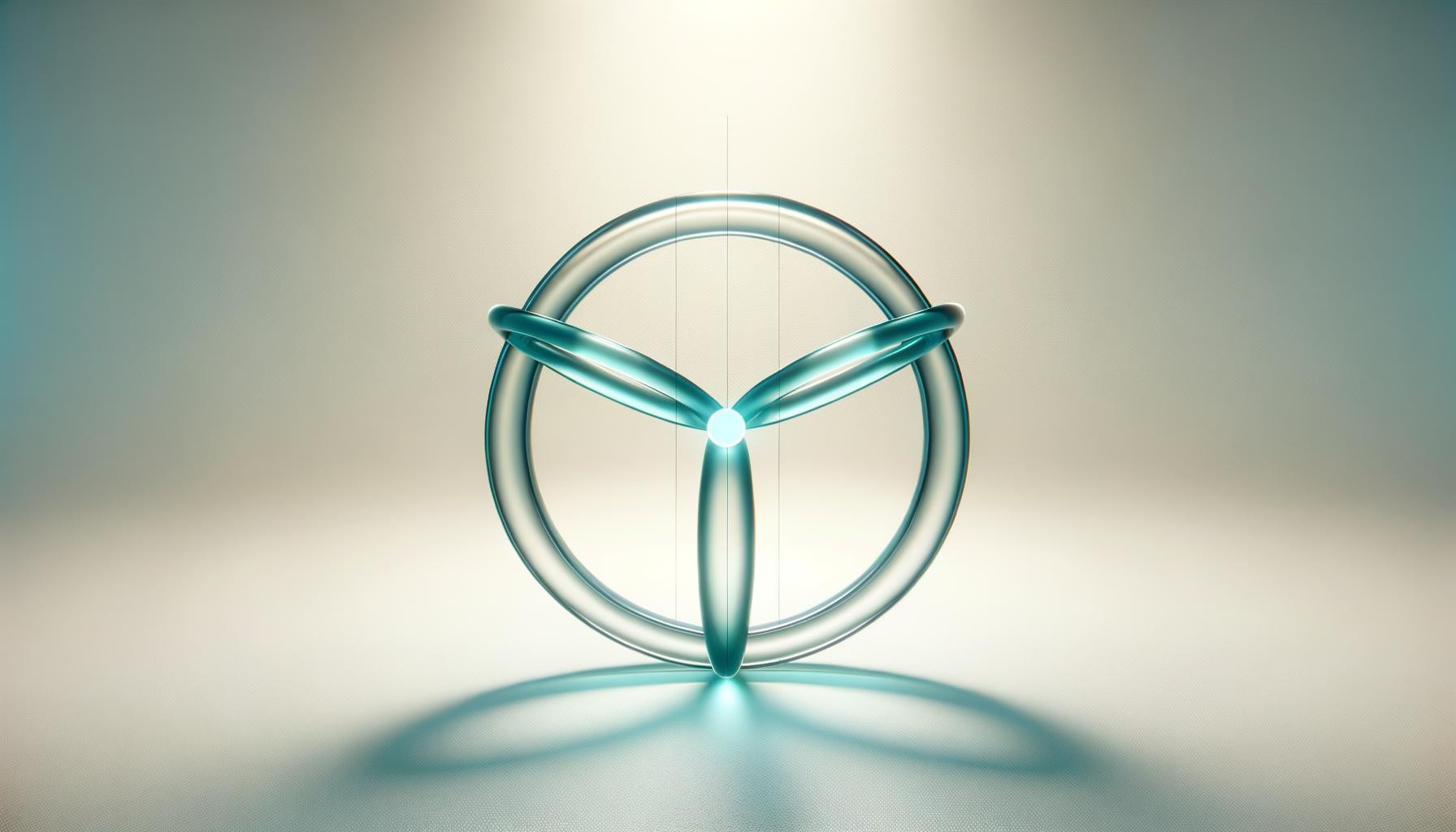Measure Agile Ceremony Impact, Not Just Efficiency
Measure Agile Ceremony Impact, Not Just Efficiency

Impact Beats Efficiency: What a Real Standup Changed for My Team
You know the feeling. Another remote standup on the calendar, everyone half-listening, half-writing email. I’ve rolled my eyes at these meetings more times than I care to admit. But last week, that changed. Right near the end, when people were already glancing at the clock, someone mentioned shifting focus to a new feature. And just like that, another teammate said, “Wait—if you do that first, I’ll be blocked all afternoon.” The energy completely shifted. Cameras popped on. People stopped multitasking. For the first time that week, the call actually felt like a team trying to solve the same puzzle. It wasn’t what anyone planned, but it was exactly what we needed.

That one comment saved us a whole day’s worth of rework. The alignment happened right away. Standups are short—typically no more than 15 minutes—but they act as a pulse check to measure agile ceremony impact for both project health and team morale agilekrc.com.
I get why it’s trendy to call ceremonies inefficient or outdated. I’ve been tempted to toss them too, hoping to claw back some focus time. Six months ago, I really thought a “meeting detox” would solve everything—just delete half the invites and see what’s left standing. But when you look closer, those cuts are only smart if you’re clear about what you’re really measuring.
The issue isn’t the ceremony itself; it’s whether it delivers impact. Impact means real-time collaboration, surfacing and unblocking dependencies as they happen, and keeping your team culture intact, even when remote. Efficiency is nice. But if a ceremony actually prevents wasted hours—or worse, trust breakdowns—then it’s doing the job. We should be evaluating these meetings by what they enable—use a playbook to assess meeting impact—not just by how quickly they end.
That’s what standups actually do when they work. They’re not just status updates; they uncover hidden problems. And if you’re not getting that kind of impact? Then yeah, maybe that’s the meeting to cut.
How to Recognize—and Measure Agile Ceremony Impact—in Your Ceremonies
Picture a relay race. If all you notice is the time on the stopwatch, you might forget to check whether the baton actually made it into the next runner’s hand. That’s the difference between efficiency (fast, but did you get anywhere?) and impact (did you actually hand things off, unblock momentum, keep everyone moving together?). When we talk about agile ceremony effectiveness, I’m looking for three things: collaboration that’s more than just reporting, dependencies actually surfaced and cleared, and signs that the team culture is still alive, not just functioning.
First, collaboration. Don’t just count heads in the call—watch for what happens live. Are people discovering new information together, making decisions that stick, and actually solving things in the moment? If you leave a meeting with no new direction, no shared ah-ha, or no plan someone didn’t have walking in, that’s a red flag. You want rituals where you can say, “We made progress right then,” not just, “We listed our tickets.”
Next up is unblocking. You’re looking for moments when someone’s stuck or a dependency pops up—and the team doesn’t just nod and move on. Instead, owners get assigned, paths open up, and you all get a clear plan to actually resolve the blocker. Here’s the trick. Bottlenecks hit hardest where your software team runs into support or outside groups, not so much inside the core group, which means surfacing and clearing those inter-team blockers is crucial.
And then there’s culture. This one’s easier to overlook, especially since everything’s on video. But when you see cameras on, shared laughs, and the team energy we often miss in remote sprints, you know something real is happening. It sounds soft, but in a remote world, keeping engagement and mutual support high is non-negotiable. In fact, teams that built in rituals—like a quick group cheer or project-ending Nerf gun volley—saw meaning scores jump by 16%.
The good news is, you don’t need weeks of data or complicated metrics. You can rate each ceremony this week on each dimension—collaboration, unblocking, and culture—from 0 (no evidence) to 2 (clear, frequent, and valuable impact), using impact metrics for standups to guide the scoring. A score of 4 or better out of 6 means the ritual’s pulling its weight. If not, decide whether to tweak the format or cut it and try something else. Do this after every major ceremony and you’ll have a clear, repeatable way to decide what stays, what changes, and what quietly disappears from your calendar—so you optimize for effectiveness over efficiency without getting caught up in efficiency for its own sake.
How Managers Can Assess Ceremony Impact—And Act Fast
Start with this week’s evidence. Seriously, pull up the last invite and watch how people actually show up. Not just who’s on the call, but what happens in real-time. Are blockers surfacing, actual decisions landing, teammates riffing instead of reporting? List what you see against those three buckets: did we collaborate, did we unblock something, did anyone show up as their real self? It’s about collecting specifics, not gut feel. Write down moments you witnessed. You don’t need a custom rubric, just direct notes on “collab actually happened” and “we solved X together.”
Next, turn those notes into outcomes right away. Treat these as meeting impact metrics: count blockers cleared, real decisions made, hours or churn saved, and concrete follow-ups spun out. Stack up the outcomes on a whiteboard or doc so you can see the impact at a glance. These are your metrics for the week. Quick enough to act on before the next sprint is even underway.
If the ceremony isn’t moving the needle, don’t scrap it yet. First, tweak what’s in your control. Get clearer on why the meeting exists, switch up the format (text vs. live, breakout vs. roundtable), and actively invite the quieter folks to engage. I’ve killed plenty of meetings that didn’t pull their weight, but only after we tried to fix underperforming daily standups. Sometimes it’s the process, not the people.
Have the team actually walk through, “Did we get what we needed?” and if the answer’s no, start small experiments. A better prompt, one less topic, clear owner for hurdles. If the impact still doesn’t show up after a week or two of tweaks, then yes, replace it. But do the work of fixing first.
Prioritize impact over efficiency, or you’ll miss those moments where a quick touchpoint or shared laugh ends up driving trust and creative alignment all week. When you find proof that your ceremony delivers, keep it—and if you don’t, reshape it or let it go. The real test is whether it moves the team, not just the clock.
Common Objections—and How to Keep Ceremony Assessment Fair
Efficiency anxiety is real, but saving twenty minutes isn’t worth it if you’re gambling away hours on hidden rework or avoidable fire drills. Think about what you’d pay to surface just one live blocker or fix a root cause before it becomes next week’s meltdown. It’s not about keeping or cutting ceremonies—it’s about ensuring they deliver results.
Let’s talk morale. I cringe at forced fun, and yes, there are meetings that drain the life out of everyone (been there, mentally calculating my grocery list). But I’ve watched what happens when a camera comes on in a genuine moment. Suddenly the energy shifts, someone cracks a joke, and people feel seen. Even just a monthly “cameras on, no judgment” rule can rebuild trust and speed. Last quarter, after a rough patch, we loosened things up and our team actually started hitting targets again. It’s not the ritual itself; it’s the authentic connection that lifts pace and keeps cynicism at bay.
Consistency in assessment is where most teams stumble. The fix: each week, set clear signals for what you’re counting, keep the feedback loop short, and talk about impact in real terms you can all see right now, not some abstract standard from last quarter.
If impact isn’t showing up when you measure agile ceremony impact, don’t wait. Admit it, cut the ritual, and replace it with something sharper. You won’t always nail it the first time, and that’s fine. But I’ll admit, sometimes I still struggle to toss out a recurring meeting that “sort of works” for some but not all. You can know all the logic and still hesitate—a habit formed, maybe, or just not wanting to rock the boat. If a process isn’t driving results and can’t be fixed, cut it and replace it with something better. That’s how you keep your ceremonies working for you, not the other way around.
Make Impact Real: Drive Ceremony Change This Sprint
In your next sprint, don’t wait for another quarter-end review. Adjust your ceremony format to raise impact right away. That means tighter timeboxes, a sharply stated purpose in every invite, and active facilitation that welcomes real discovery. For hybrid teams, this can be as simple as five-minute focused standups with preset prompts (“Where are you blocked right now?”), or rotating facilitators who push the conversation past status updates. Direct energy toward surfacing what’s actually blocking work and let each person know the meeting’s intent up front so engagement isn’t optional—it’s inevitable.
If you run these adjustments and impact is still flat—no blockers surfaced, collaboration feels like report-outs—replace the ritual. Blend async updates (thread or doc for status and trivial details) with a single weekly live alignment that makes sync vs. async outcomes explicit for cross-team dependencies and decisions. Don’t keep a ceremony just because it’s tradition. Use its slot for something that actively unblocks or aligns, not one that just burns through minutes on the calendar.
Create a simple “ceremony impact review” this week and make your team’s impact visible by sharing outcomes with your team. Jot down what actually changed—new decisions, blockers cleared, energy or jokes exchanged—and post the notes. Charlie Hall and I talked about visible leadership being magnetic. You model how assessment works when you do this openly, not behind closed doors.
Need to share your team’s impact clearly—use our AI to generate clean, on-brand posts, standup notes, and docs in minutes, tailored to your goals, constraints, and tone.
Lead with impact. In a remote world that’s your job. Invite your team in from the start to assess rituals together. #YourMove #Leadership #TeamCulture #Agile #RemoteWork
Enjoyed this post? For more insights on engineering leadership, mindful productivity, and navigating the modern workday, follow me on LinkedIn to stay inspired and join the conversation.
You can also view and comment on the original post here .
